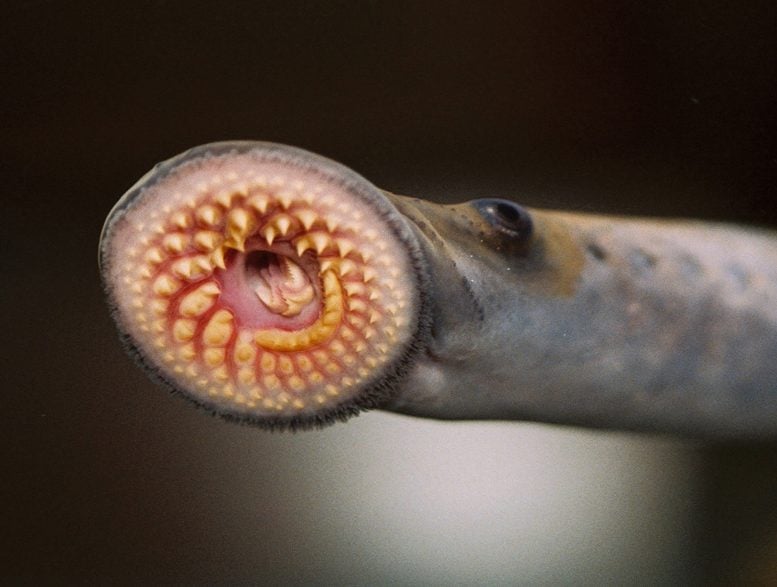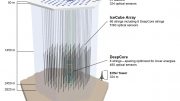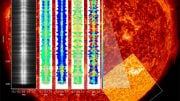
Research on sea lampreys offers insights into vertebrate evolution, highlighting similarities in stem cell gene networks with jawed vertebrates and explaining differences in jaw formation. Credit: T. Lawrence, Great Lakes Fishery CommissionA
These invasive, blood-sucking fish “may hold the key to understanding where we came from.”
One of only two jawless vertebrates, sea lampreys, which are causing significant damage to Midwestern fisheries, are also aiding scientists in understanding the origins of two crucial stem cells that played a key role in the evolution of vertebrates.
Northwestern University biologists have pinpointed when the gene network that regulates these stem cells may have evolved and gained insights into what might be responsible for lampreys’ missing mandibles.
The two cell types — pluripotent blastula cells (or embryonic stem cells) and neural crest cells — are both “pluripotent,” which means they can become all other cell types in the body.
In a new paper, researchers compared lamprey genes to those of the Xenopus, a jawed aquatic frog. Using comparative transcriptomics, the study revealed a strikingly similar pluripotency gene network across jawless and jawed vertebrates, even at the level of transcript abundance for key regulatory factors.
Differences in Gene Expression
But the researchers also discovered a key difference. While both species’ blastula cells express the pou5 gene, a key stem cell regulator, the gene is not expressed in neural crest stem cells in lampreys. Losing this factor may have limited the ability of neural crest cells to form cell types found in jawed vertebrates (animals with spines) that make up the head and jaw skeleton.
The study was recently published in the journal Nature Ecology & Evolution.
By comparing the biology of jawless and jawed vertebrates, researchers can gain insight into the evolutionary origins of features that define vertebrate animals including humans, how differences in gene expression contribute to key differences in the body plan, and what the common ancestor of all vertebrates looked like.
“Lampreys may hold the key to understanding where we came from,” said Northwestern’s Carole LaBonne, who led the study. “In evolutionary biology, if you want to understand where a feature came from, you can’t look forward to more complex vertebrates that have been evolving independently for 500 million years. You need to look backward to whatever the most primitive version of the type of animal you’re studying is, which leads us back to hagfish and lampreys — the last living examples of jawless vertebrates.”
An expert in developmental biology, LaBonne is a professor of molecular biosciences at the Weinberg College of Arts and Sciences. She holds the Erastus Otis Haven Chair and is part of the leadership of the National Science Foundation’s (NSF) new Simons National Institute for Theory and Mathematics in Biology.
LaBonne and her colleagues previously demonstrated that the developmental origin of neural crest cells was linked to retaining the gene regulatory network that controls pluripotency in blastula stem cells. In the new study, they explored the evolutionary origin of the links between these two stem cell populations.
Significance of Neural Crest Cells
“Neural crest stem cells are like an evolutionary Lego set,” said LaBonne. “They become wildly different types of cells, including neurons and muscle, and what all those cell types have in common is a shared developmental origin within the neural crest.”
While blastula-stage embryonic stem cells lose their pluripotency and become confined to distinct cell types fairly rapidly as an embryo develops, neural crest cells hold onto the molecular toolkit that controls pluripotency later into development.
LaBonne’s team found a completely intact pluripotency network within lamprey blastula cells, stem cells whose role within jawless vertebrates had been an open question. This implies that blastula and neural crest stem cell populations of jawed and jawless vertebrates co-evolved at the base of vertebrates.
Northwestern postdoctoral fellow and first author Joshua York observed “more similarities than differences” between the lamprey and Xenopus.
“While most of the genes controlling pluripotency are expressed in the lamprey neural crest, the expression of one of these key genes — pou5 — was lost from these cells,” York said. “Amazingly, even though pou5 isn’t expressed in a lamprey’s neural crest, it could promote neural crest formation when we expressed it in frogs, suggesting this gene is part of an ancient pluripotency network that was present in our earliest vertebrate ancestors.”
The experiment also helped them hypothesize that the gene was specifically lost in certain creatures, not something jawed vertebrates developed later on.
“Another remarkable finding of the study is that even though these animals are separated by 500 million years of evolution, there are stringent constraints on expression levels of genes needed to promote pluripotency,” LaBonne said. “The big unanswered question is, why?”
Reference: “Shared features of blastula and neural crest stem cells evolved at the base of vertebrates” by Joshua R. York, Anjali Rao, Paul B. Huber, Elizabeth N. Schock, Andrew Montequin, Sara Rigney and Carole LaBonne, 26 July 2024, Nature Ecology & Evolution.
DOI: 10.1038/s41559-024-02476-8
The paper was funded by the National Institutes of Health (grants R01GM116538 and F32DE029113), the NSF (grant 1764421), the Simons Foundation (grant SFARI 597491-RWC) and the Walder Foundation through the Life Sciences Research Foundation. The study is dedicated to the memory of Dr. Joseph Walder.









Be the first to comment on "New Study: These Bizarre Blood-Sucking Fish Have a “Jaw-Dropping” Evolutionary Origin"